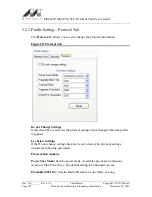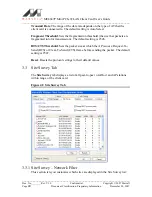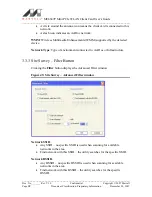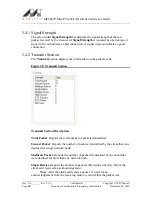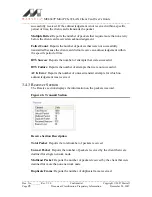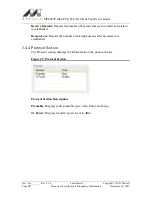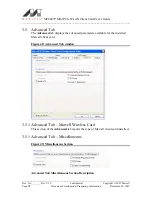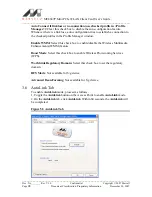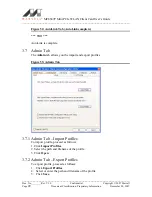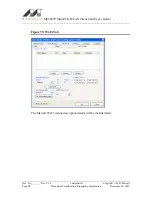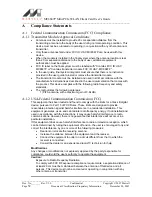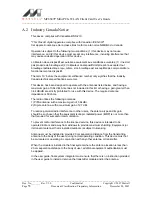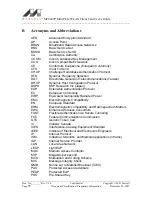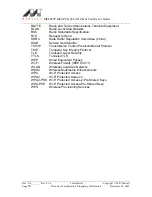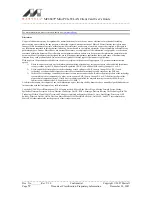
MC8687P Mini PCIe WLAN Client Card User’s Guide
________________________________________________________________________
________________________________________________________________________
Doc. No________ Rev.V1.0
Confidential
Copyright © 2007 Marvell
Page
53
Document Classification: Proprietary Information
December 28, 2007
A.2 Industry Canada Notice
This device complies with Canadian RSS-210.
"
This Class B digital apparatus complies with Canadian ICES-003
"
Cet appareil numérique de la classe B est onforme à la norme NMB-N3 du Canada
Operation is subject to the following two conditions: (1) this device may not cause
interference, and (2) this device must accept any interference, including interference that
may cause undesired operation of this device.
L'utilisaton de ce dispositif est autorisée seulement aux conditions suivantes: (1) il ne doit
pas produire de brouillage et (2) l'utilisateur du dispositif doit étre prêt à accepter tout
brouillage radioélectrique reçu, même si ce brouillage est susceptible de compromettre le
fonctionnement du dispositif.
The term ‘IC' before the equipment certification number only signifies that the Industry
Canada technical specifications were met.
This device has been designed to operate with the antennas listed below, and having a
maximum gain of 3.64 dBi. Antennas not included in this list or having a gain greater than
3.64 dBi dB are strictly prohibited for use with this device. The required antenna
impedance is 50 ohms.
The radio utilizes the following antennas:
1) PIFA antenna, with a maximum gain of 3.64 dBi.
2) Dipole antenna, with a maximum gain of 2.7 dBi.
To reduce potential radio interference to other users, the antenna type and its gain
should be so chosen that the equivalent isotropic radiated power (EIRP) is not more than
that required for successful communication.
To prevent radio interference to the licensed service, this device is intended to be
operated indoors and away from windows to provide maximum shielding. Equipment (or
its transmit antenna) that is installed outdoors is subject to licensing.
Antennas must be installed to provide 20 cm separation distance from the transmitting
antenna to the body of the user during normal operating condition. This device must not
be co-located or operating in conjunction with any other antenna or transmitter.
When the module is installed in the final system where the antenna location is less than
20 cm separation distance to the body of user, additional equipment authorization must
be applied.
In the user guide, final system integrator must ensure that there is no instruction provided
in the user guide to install or remove the transmitter module and/or the antenna.

